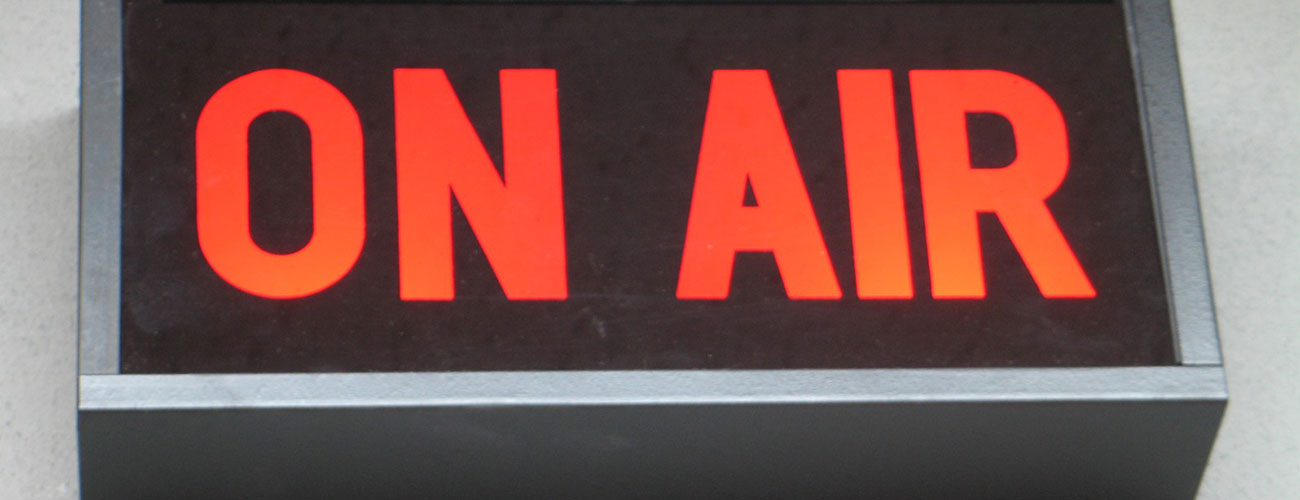One morning last week, I lay snuggled under my warm duvet, scrolling through Facebook. The feed looked very different from the usual photos of friends’ children and stories about the state of the journalism industry. Instead, the top three items were livestreams from Iraq, where a battle to free the city of Mosul from ISIS is underway.
I flashed back to the spring of 2003, when Operation Iraqi Freedom was in full swing. I distinctly remember switching on one of the cable channels and being transfixed by a live shot of a town square somewhere in Iraq. The caption explained that US forces were trying to capture an active sniper somewhere in the vicinity. On the screen, I could hear shots being fired and see soldiers running. I remember telling myself to switch off the TV as questions swirled: Was I about to see someone die on live television? How long was the delay? Did the channel have ability to kill the stream if something terrible happened?
Watching the livestreams from Mosul on Facebook conjured the same fears. The streams were rebroadcast, unedited, by Channel 4 News, Russia Today and Al Jazeera from the same outlet, Rudaw, the Kurdish News agency. The identical footage, embedded in the Facebook pages of these outlets, were the top three items in my feed.
Jon Laurence, the digital editor at Channel 4 News told the Guardian last week that the outlet was ready to kill the livestream at any time, using the same safeguards they use for the main television broadcasts. He was clear that they were using identical standards they apply elsewhere.
Related: Facebook is eating the world
Yet, seeing Mosul on my feed felt jarring—and such images are here to stay. On Friday, Facebook announced that graphic content that is newsworthy will be allowed on Facebook, partly in response to the napalm girl controversy. But Facebook Live is still a relatively new technology, and experimenting with how to present such content. There are three features I expect will change on Facebook Live in the coming months.
First, as Harriet Salem’s powerful screenshot on Twitter shows, Facebook reactions do not always work. In certain situations, the emoticons floating across the screen are inappropriately cartoonish.
The 21st century. A place where we live stream war while Facebook prompts us to ‘react’ with an emoticon. #Mosul https://t.co/1eUA4P7ojz pic.twitter.com/yVOLBOHUHs
— Harriet Salem (@HarrietSalem) October 17, 2016
We’ve already seen some examples of the way live streaming has been used for serious and often graphic events, from Lavish Reynolds’s livestream of Philando Castile’s death to the aftermath of an explosion in Bangkok and the shootings at a Munich shopping center in July. It doesn’t matter if it’s Periscope’s bubbling hearts, or the floating Facebook emoticons, there should be an easy way of turning them off for certain live streams. This should be on the agenda at both Twitter and Facebook.
Secondly, there were an incredible number of comments—Channel 4 News had over 10,000 alone. Some were thoughtful and well argued, but many included racist and inflammatory language about Muslims, Jews, and Kurds. Until the technology can effectively support live, high-volume moderation, we’re going to see problems for news organizations that host this type of content.
Related: Facebook is being taken somewhere it never wanted to go
For example, during the Dallas police officer shooting in July, commenters were posting information that placed the police in danger by noting their positions, as well as naming potential suspects and victims. News organizations have faced moderation challenges since the beginning of online comments, but nothing at the scale of live messages when people are reacting directly to what they’re seeing. Changing this will require a willingness from news organizations to provide resources for adequate moderation staff.
Finally, the relationships we have with our phones are significantly more intimate than those we have with other devices, both because of their size and because we spend so much time scrolling through our social feeds on them. The headline on this CBC article sums it up for me: “Puppies, selfies, corpses.” It’s the juxtaposition of the mundane with the graphic that is so disconcerting. It is difficult to process the latest viral video of a cute baby alongside live footage from a war zone, particularly on a small screen that we must hold close to our eyes.
Seeing graphic imagery when we’re not prepared for it is not the same as watching a television news bulletin we have deliberately chosen to consume. There is evidence that people do not want to access unexpected images in these spaces. The fact that articles explaining “how to turn off autoplay on Twitter and Facebook” went viral in the hours after the shooting of the two Virginia TV journalists last August is testament to this. The power and the ultimate challenge of Facebook Live is that it plays in front of you before you have a chance to think about whether or not you want to see it.
Facebook may not be a place where people want to watch an armed offensive unfold. It should be up to the user to decide. I expect that over the next 6 months, we’ll see features to give news organizations more control over flagging live videos that include events that could unexpectedly include graphic footage, more control over managing a delay, the ability to turn off emojis, and that will support more sophisticated comment moderation technology. But ultimately, users need more control over what they see.
Live streaming isn’t going anywhere. The technology will continue to host photos and video from family get-togethers, school performances, and sporting achievements, bringing pleasure to millions. But it is how the platforms respond to the challenges posed by serious events that will test how seriously they take their role within the news ecosystem.




